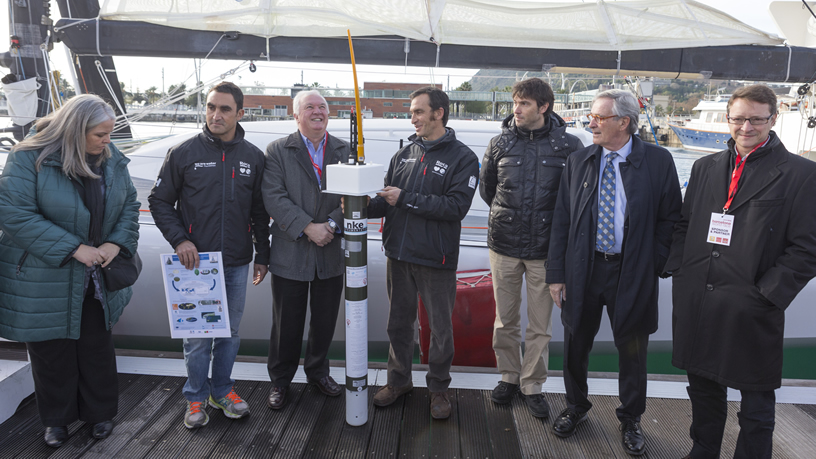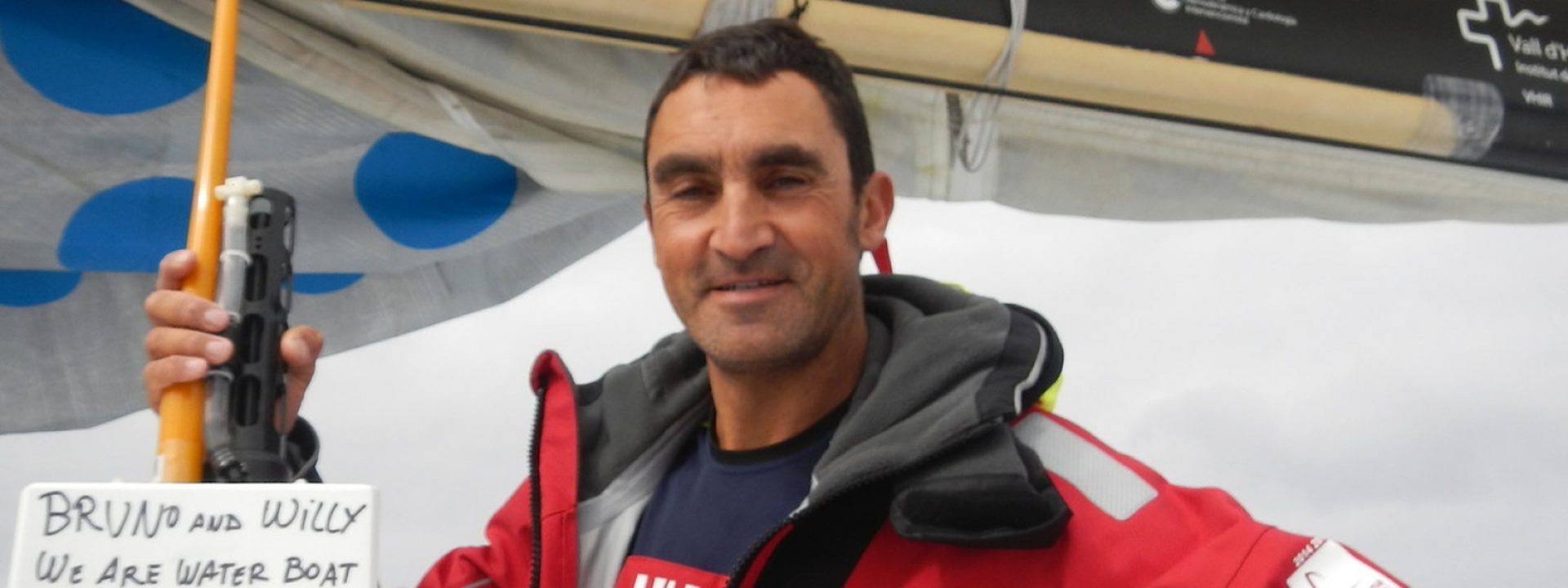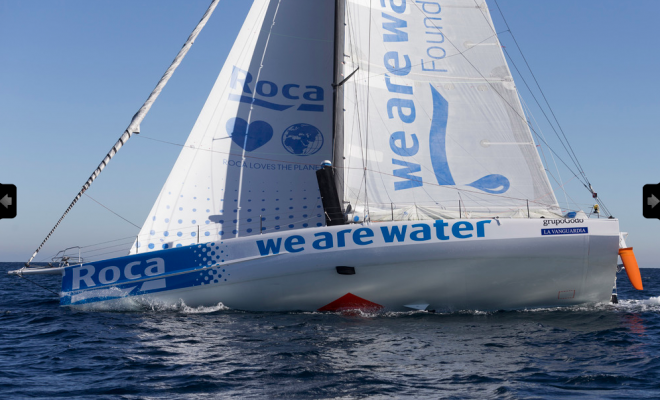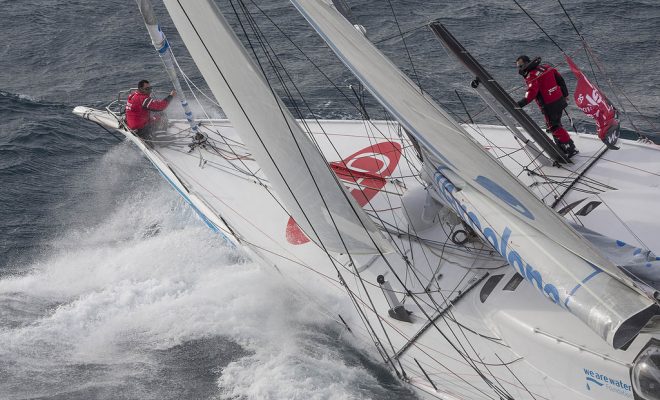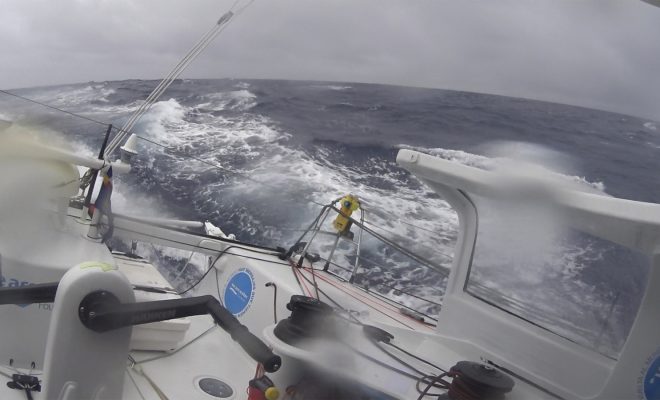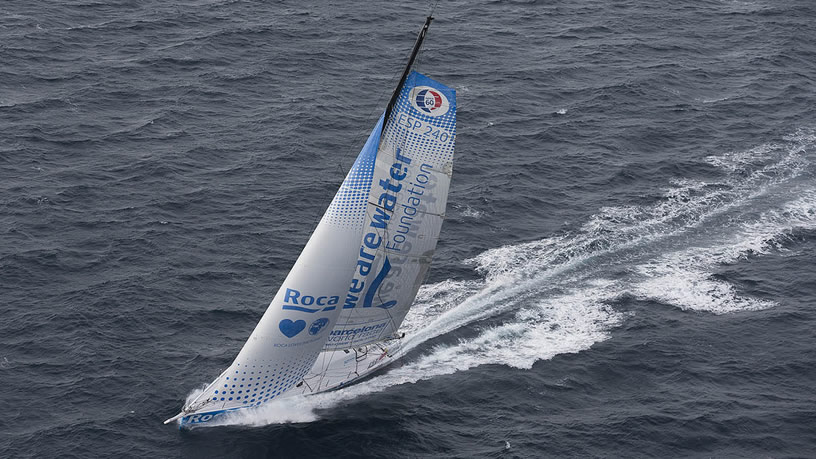
The 35 million cubic kilometres of fresh water found on the Earth depend on the 1.338 billion cubic kilometres of salt water in the oceans. The ocean is not only the driving force of the water cycle, it is also an immense lung that absorbs large quantities of CO2, the main gas of the greenhouse effect. The health of the ocean is essential for the climate and water of our planet and scientists have thrown themselves into its study to learn more about its physical and chemical secrets.
Two years ago, the brothers Bruno and Willy García launched the Argo beacon during the Barcelona World Race regatta. This is a project linked to the IOC-UNESCO programmes in relation to the study of the structure and dynamics of water bodies in the oceans.
On a global scale, the Argo project is based on the deployment of beacons that behave like real submarines. Once Bruno and Willy launched it in the South Atlantic, the beacon spent around 10 hours floating before automatically sinking to a depth of around 1000 m., where it stayed between 8 and 10 days at the mercy of currents. It then sank to a depth of 2000 metres and right after rose gradually for 6 hours until it reached the surface. During this voyage, the sensors of the beacon collected temperature and salinity data. When it emerged, the beacon automatically sent these data by satellite. Ten days later, the beacon sank again to repeat the entire cycle.
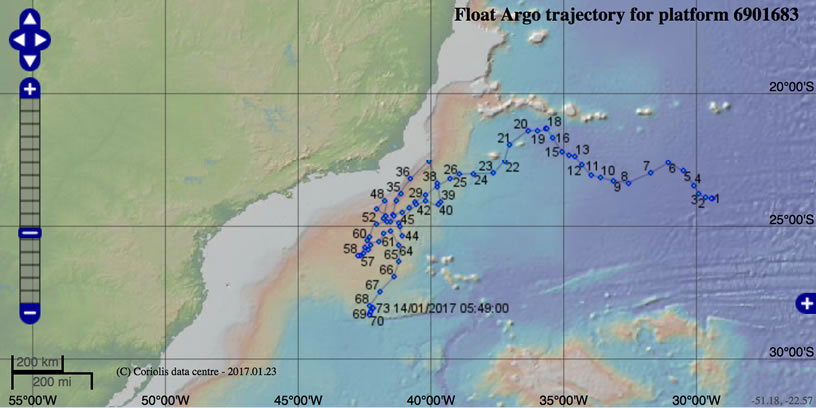
Float Argo trajectory
During these two years, the beacon launched by the We Are Water has carried out 72 immersions (the last one took place on the 14th January, the next one will be today 24th January) and it has drifted 2100 miles. The batteries of each beacon have a life cycle of five to seven years. You can see the trajectory of the beacon of the We Are Water and the collected data in its 72 precisely geo-located immersions in the website of the beacon.
The deployment of Argo beacons is one of the most important scientific activities carried out during the Barcelona World Race in collaboration with the IOC-Unesco. Nowadays there are more than 3000 Argo beacons drifting in the ocean, but most of them are located in areas with heavy maritime traffic (the Argo beacons are launched mainly by cargo ships and fishing vessels) and there are very few in the remote oceans of the Southern hemisphere, which is where the round the world race takes place. On the 23rd March 2015, when the We Are Water and the entire fleet were in the South Atlantic, the Race Management of the Barcelona World Race allowed the launching of the beacons carried by each vessel. A further step in the knowledge of the water science.
